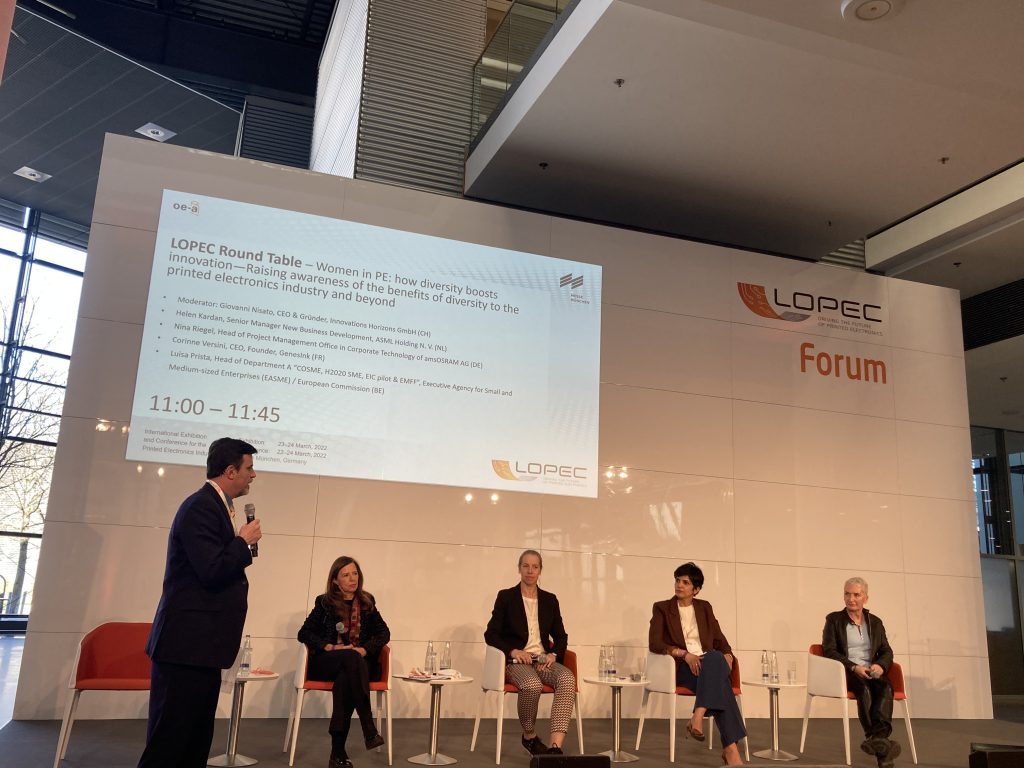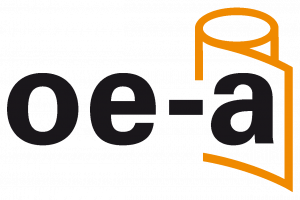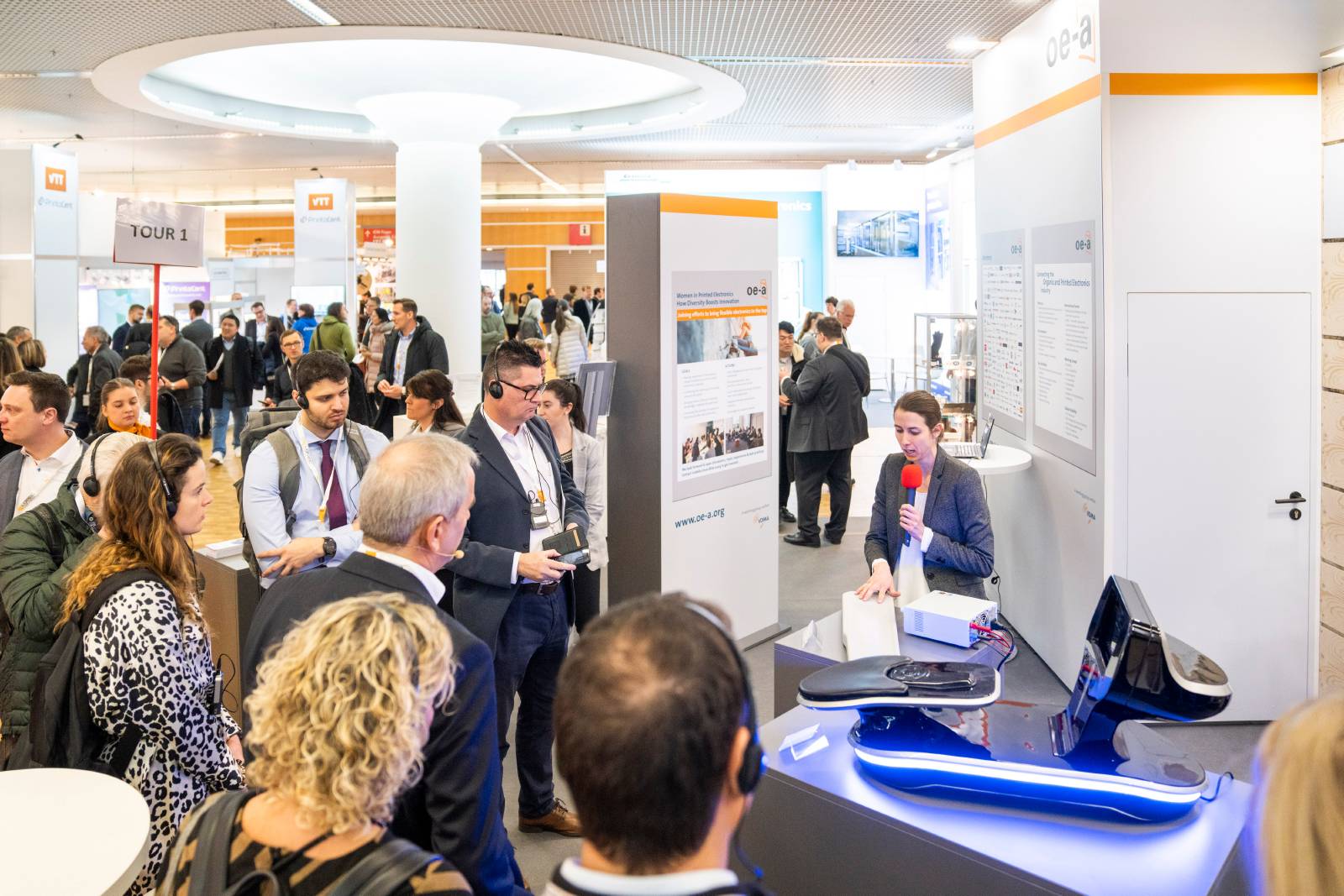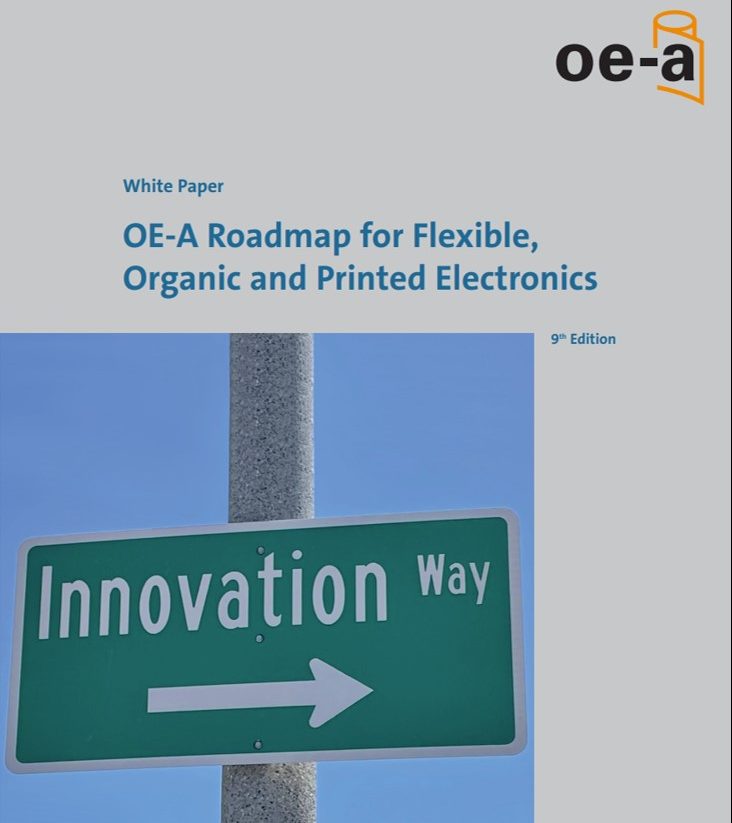At LOPEC 2022, the OE-A hosted a “Women in PE” panel on 24 March, in which female leaders not only shared insights into obstacles and challenges on the path towards more diversity, but also optimistic visions for the future – a future that requires female perspectives and leadership. Giovanni Nisato, Managing Director, Innovation Horizons, moderator of the panel at LOPEC, sat down for an interview with the female leaders for OPE journal
OPE journal: What do we know that tech businesses tend to gain when they increase diversity? Which risks are usually decreased?
Luisa Prista: There is clear evidence that diversity improves the performance, impact and sustainability of companies. For instance, a study of EIB has shown that, when companies that are led by women receive investments, they on average perform better in the long-run. The absence of women in tech leads to a lack of women in shaping the future. In other words: our innovations, solutions, products and services will be designed mostly to favour only one half of society.
Nina Riegel: I imagine myself as a talented engineer who is looking at different companies in printed electronics. I would apply at a company where I can develop products that bring value to customers, where I can be creative, learn and grow together with my colleagues, and where I can enjoy my work every day.
Studies by e.g. Cornell University clearly link the diversity index to the reputation of companies and their retention rate! As a talent – independent of age, gender or ethnicity – I imagine having a choice between various players with a focus on diversity. At amsOSRAM I am personally involved in a grassroot initiative to foster diversity for better leadership: now we are integrated in the overall diversity strategy.
I also think, for instance, of the small, diverse team of specialists that is developing quantum dots in Hillsborough within amsOSRAM. They succeeded in developing state-of the art dots with a unique encapsulation – ready to be used in harsh LED environment. How was that possible? They keep the benefits of a start-up: they can still experiment, discuss and decide quickly, and they are embedded in amsOSRAM – with more applications and markets for quantum dots.
Moreover, a 2015 McKinsey report on 366 public companies found that those in the top quartile for ethnic and racial diversity in management were 35% more likely to have financial returns above their industry mean, and those in the top quartile for gender diversity were 15% more likely to have returns above the industry mean. A Boston Consulting Group study found that companies with more diverse management teams have 19% higher revenues due to innovation. This finding is significant for tech companies, start-ups and industries where innovation is key to growth!
OPE journal: Asked specifically for printed electronics: why could diversity provide a competitive advantage?
Helen Kardan: The nature of printed electronics requires us to look at electronics in a different way. The way of how we integrate and interact with technology will be different. Therefore diversity of mind and gender can play a big role.
Corinne Versini: 80% of the decision making for purchasing in the world are made by women. If you don’t have women in your team, you can explain or say what you want, the conclusion will always be this: “You cannot serve your market because you cannot know it!”
H. Kardan: Women are 50% of the population, or in business terms, 50% of the target market. In the B2C business, the vast majority of financially related decisions are made or influenced by women – with an increasing tendency. Therefore it is crucial to the success of any business to incorporate the voice of female users in a business strategy, technology development and product design. The best way to achieve this is to increase the number of female employees in all sectors and layers of a company.
OPE journal: What stops or slows down the adoption of diversity as a strategy in tech companies?
N. Riegel: Diversity is an accepted topic: looking at invention disclosures done in 2016 – 2018 in OSRAM OLED, the number of invention disclosures that were eventually patented was highest for the team within R&D with the highest diversity. Why is it not adopted more often? Frequently, there simply is no one! Looking at all organisations of government talent programmes, the percentage of women is below 50%; for people in leadership positions, it is still below 30%, according to Cusanuswerk (2021). So going for programmes especially for women helps closing the gaps! In the end, all employees, the whole company and our society will benefit.
H. Kardan: The importance of diversity is an accepted topic, but especially in tech companies, it mainly refers to the diversity of disciplines (electrical engineers, mechanical engineers, etc). The other argument would be due to high growth and demand of new technologies, companies are more focused on growth, and change in, for example, leadership style or new ways of doing things are not urgent. We focus on incremental improvement on top of an already growing business.
OPE journal: What can companies do? How can diversity be implemented in organisations?

C. Versini: For me it is easy: each time I want to hire a woman, I ask the question to myself, whether there is a man with the same skills that I could hire.
L. Prista: The EU is doing a lot in order to improve the situation in the innovation ecosystem in terms of financial measures and actions (e.g. Women TechEU, EU Prize for Women Innovators, WeGate, Women Leadership programme).
H. Kardan: In ASML we see more interest in taking diversity and inclusion into how we build teams; the focus is on diversity of expertise and education, but since we have a global pool of hiring, we are hiring a lot of women.
OPE journal: What could all of us do now to impact change – and how would we measure that?
N. Riegel: Most important is the hiring process. I remember a very good boss of mine hiring an intern. He had almost dismissed a candidate with “metal in the face” (piercings). He admitted to me that he caught himself being biased and invited the candidate for the interview nevertheless. This intern became the best performing intern in the team.
Bias is normal – in all dimensions! It can involve a different education, age, cultural background or gender. People who are different feel less familiar, and we do not connect so easily. You should make your team aware that sometimes we are blind for what we do not know. Awareness is the first step – we are all judgment machines – so look at yourself with a smile. Step back, rethink and keep the door open and embrace diversity. The effort this will take can result in innovation, change mastery and sustainable growth.
C. Versini: We, as women, have to explain to our male colleagues that if they hire men, this is actually very normal. It could be a genetic preference: everybody has this tendency to mingle with people that look like us. This is reassuring for ourselves! And when you hire people, the risk we always imagine is to hire the wrong person. We should rather be thinking about the risk of not picking the ideal person because of bias! In the first case, it is logical for us to go on the safe route and hire the person who will resemble us the most. However, if we stop thinking with our reptilian brain and plug in the rational brain, things change. So stop feeling guilty for something that is a reflex and start being more like a mammal. Stop feeling guilty is the key.
H. Kardan: We cannot and should not want overnight change. This would create more chaos than benefits. We should rather focus on the ripple effect of having these conversations. Every drop in the water will eventually become part of a large wave. Finally, we should be aware of our own biases and educate each other on how to deal with them to create a fair environment. This can be done at every level, personally and professionally.





